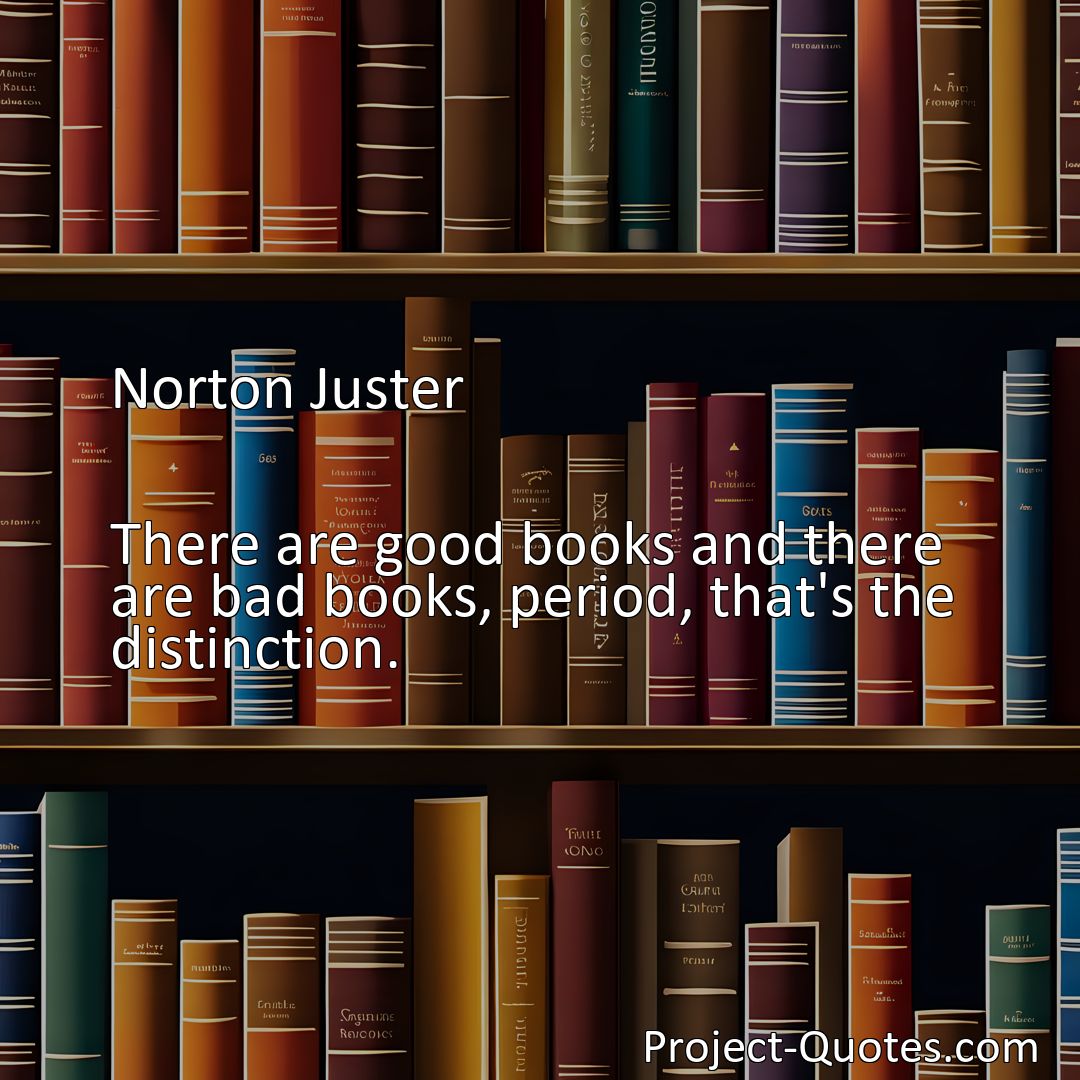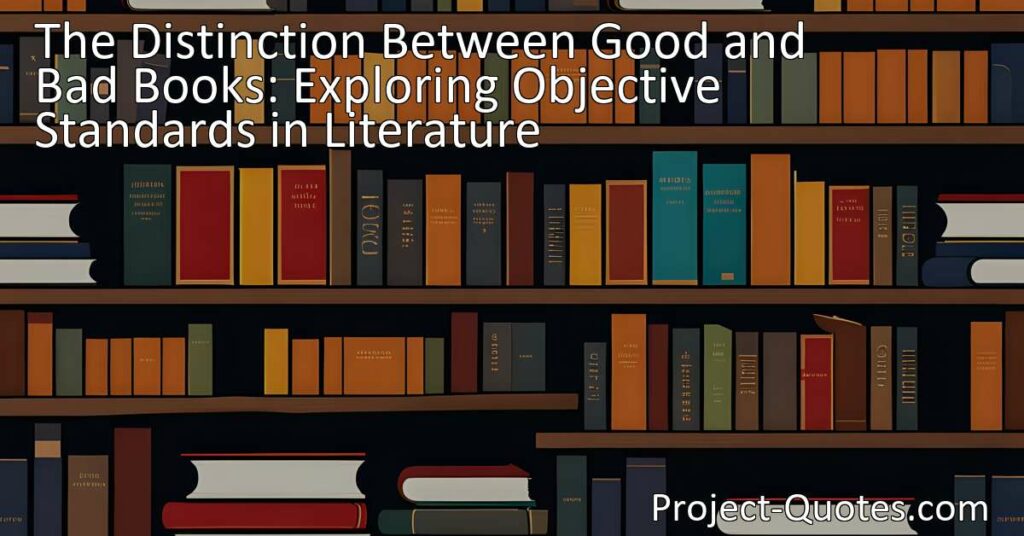There are good books and there are bad books, period, that’s the distinction.
Norton Juster
In the article titled “The Distinction Between Good and Bad Books: Exploring Objective Standards in Literature,” the author discusses the factors that differentiate good books from bad ones. While personal preferences play a role, elements such as writing style, plot, and character development contribute to determining a book’s quality. It is essential for young readers to recognize these distinctions to explore diverse genres, experience exceptional storytelling, and develop a deeper appreciation for literature.
Table of Contents
Meaning of Quote – There are good books and there are bad books, period, that’s the distinction.
When it comes to books, there seems to be an abundance of choices out there, right? Some books capture our hearts and minds, whisking us away to different worlds and teaching us valuable lessons. On the other hand, there are books that leave us disappointed, wondering why we wasted our time reading them. In fact, you can find a plethora of opinions when it comes to determining whether a book is good or bad. However, as simple as it may sound, there is indeed a distinct line between the two.
So, what makes a book good or bad? Is it purely subjective, or are there objective standards that we can rely on? Let’s dive into this topic to understand the differentiation between good and bad books.
Firstly, let’s address the idea that good and bad are purely subjective when it comes to literature. It’s true that personal preferences play a significant role in determining whether we consider a book good or bad. After all, what might captivate one person could be utterly uninteresting to another. You may love gripping mysteries, while your friend may prefer heartwarming romance novels. However, even amidst personal preferences, there are certain aspects that can generally classify a book as good or bad.
One of the crucial factors in evaluating a book is its writing style. Good books often exhibit well-crafted sentences and paragraphs that flow smoothly, making it easy for readers to immerse themselves in the story. A talented author can create vivid descriptions, realistic characters, and believable dialogue, making the reading experience more enjoyable. On the other hand, bad books may suffer from poor grammar, awkward phrasing, or excessively convoluted plotlines, which can make it challenging to stay engaged.
Another aspect worth considering is the plot or storyline. Good books tend to have captivating and well-structured plots that keep readers eagerly flipping through the pages. They may introduce unexpected twists or present thought-provoking conflicts that leave us craving for more. In contrast, bad books may have weak or predictable storylines that fail to hold our interest. If a plot feels disjointed, lacks depth, or fails to make sense, it can be a sign that the book falls into the category of “bad”.
Character development is yet another essential aspect to consider when determining the quality of a book. In good books, characters often feel like real people, with satisfying arcs and personal growth throughout the story. They may face challenges, make difficult choices, and evolve as individuals, which allows readers to connect with them on a deeper level. On the other hand, poorly developed characters lack depth, remain static throughout the narrative, or behave inconsistently. This can leave readers feeling detached from the story and ultimately label the book as “bad”.
Beyond these fundamental elements, good books possess intangible qualities that make them stand out. They may tackle significant themes and explore complex ideas that provoke critical thinking. These books have the power to inspire, enlighten, and evoke emotions, leaving a lasting impact on readers long after they’ve turned the final page. In contrast, bad books may fail to communicate any meaningful message or lack substance, resulting in a forgettable read.
While personal preferences undoubtedly play a role, there are clear distinctions that differentiate good books from bad ones. Recognizing these distinctions is essential, especially for young readers who are still discovering their literary tastes. Reading good books allows them to explore diverse genres, experience exceptional storytelling, and develop a deeper appreciation for literature as a whole. Conversely, reading bad books can be discouraging, potentially turning young readers away from the countless hidden treasures within the world of literature.
In conclusion, while the line between good and bad books may sometimes appear blurry due to personal preferences, there are definite standards that can help us distinguish the two. Elements such as writing style, plot, character development, and the ability to invoke emotions contribute to whether a book is labeled good or bad. As readers, it is crucial to seek out good books that provide us with unforgettable reading experiences, expand our horizons, and allow us to grow as individuals. So, next time you’re at the library or bookstore, remember to choose wisely and immerse yourself in the magical world of good books!
I hope this quote inspired image brings you hope and peace. Share it with someone who needs it today!


